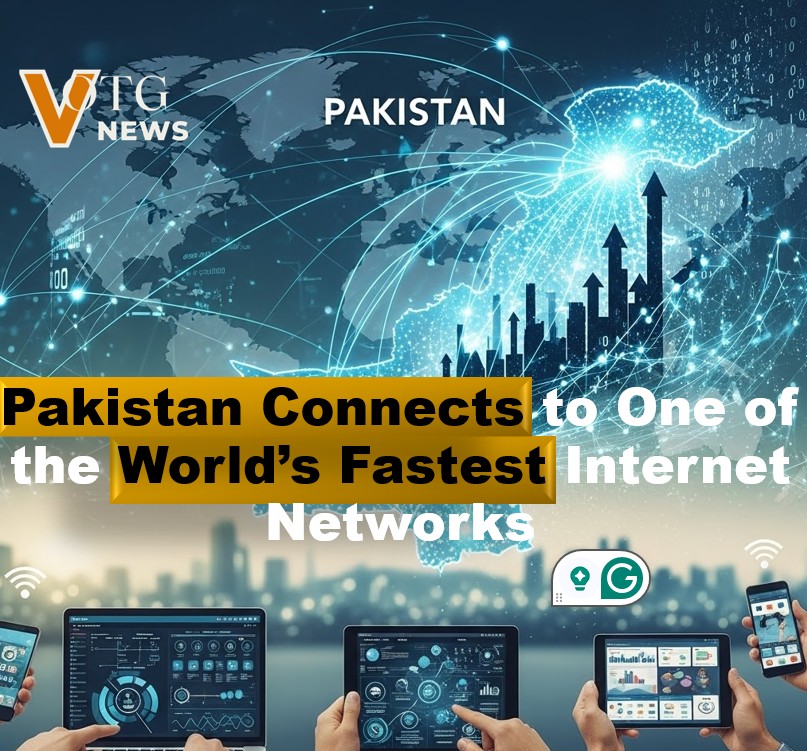Pakistan Connects to One of the World’s Fastest Internet Networks: What It Means for the Future
Pakistan has taken a major step toward transforming its digital landscape by officially joining the SEA-ME-WE 6 undersea cable system — one of the fastest and most advanced high-capacity internet networks in the world. This development marks a crucial milestone for the country’s connectivity, offering a significant boost in international bandwidth and laying the groundwork for modern, high-performance digital infrastructure.
11/24/20252 min read


A Powerful New Undersea Connection
The SEA-ME-WE 6 cable stretches more than 21,000 kilometers, linking Southeast Asia, South Asia, the Middle East, and Europe. Through this system, Pakistan has gained an additional 4 terabits per second (Tbps) of bandwidth, increasing the nation’s total international capacity by nearly 40%.
This upgrade comes via Transworld Associates (TWA), one of the country’s key internet backbone operators, and positions Pakistan to better meet the growing demand for high-speed internet, cloud services, streaming, gaming, and data-heavy applications.
A New Tier-III Data Center in Karachi
A major part of this expansion includes the construction of a Tier-III data center in Karachi, built to meet global standards and directly linked to SEA-ME-WE 6 and other major cable systems such as 2Africa.
This data center is being designed to support:
AI and machine-learning workloads
Cloud computing
Government and enterprise digital transformation
High-availability hosting and colocation
The facility is expected to become operational in 2026, making it one of Pakistan’s most advanced digital infrastructure assets.
Why This Upgrade Matters
1. Faster and More Reliable Internet
More international bandwidth means less congestion and better performance for end users. Businesses, freelancers, and households stand to benefit from smoother streaming, improved video calls, and more stable cloud access.
2. Lower Latency for Global Traffic
Modern undersea systems reduce the time it takes for data to travel across continents — a major advantage for real-time communication, online gaming, financial systems, and remote work.
3. A Boost to Pakistan’s Digital Economy
Improved connectivity strengthens:
IT exports
Freelancer productivity
Startup scaling
Cloud-based services
Data-intensive industries like fintech, e-commerce, and logistics
4. Future-Ready Infrastructure
By investing in new submarine pathways and data centers, Pakistan is preparing for increasing demand in areas like artificial intelligence, big data, and high-performance computing.
The Reality Check: Challenges Still Remain
Despite the major upgrade, Pakistan’s average internet speeds remain low compared to global standards. Slow fixed broadband, aging local infrastructure, limited fiber-to-the-home coverage, and ISP bottlenecks continue to affect users.
High-capacity undersea cables don’t automatically guarantee fast speeds for every household — the benefits depend heavily on:
last-mile fiber expansion
ISP investment
network modernization
pricing and fair usage policies
The new capacity provides potential — but Pakistan must continue improving domestic infrastructure to unlock its full value.
The Bottom Line
Pakistan’s integration into the SEA-ME-WE 6 network is a big win for its digital future. It strengthens global connectivity, supports economic growth, and sets the stage for next-generation technologies. While everyday internet speeds won’t transform overnight, this upgrade is a foundational step that will bring steady improvements over the coming years.
With strategic investment and nationwide fiber expansion, Pakistan has the opportunity to elevate itself into a truly competitive digital economy.
Disclaimer
The image is AI-generated only for illustration
